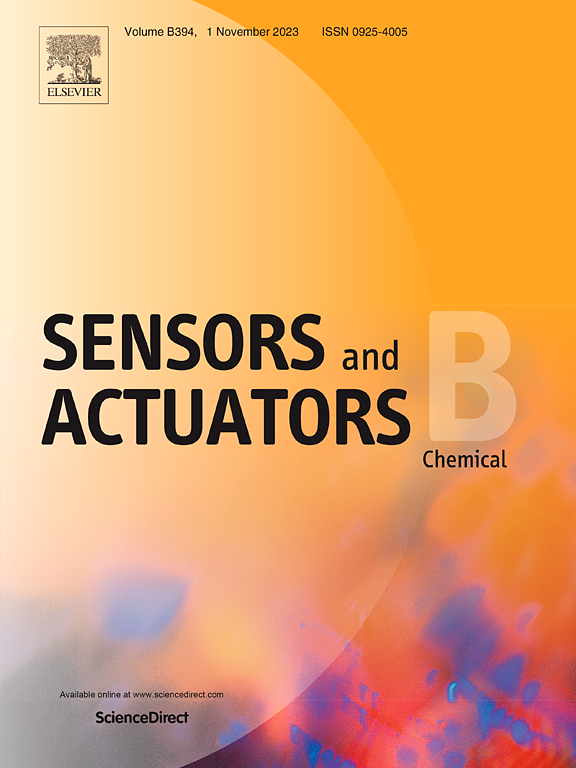MoS 2底物Mn 2 +掺杂优化策略增强抗生素污染物的SERS敏感性
IF 8
1区 化学
Q1 CHEMISTRY, ANALYTICAL
引用次数: 0
摘要
半导体表面增强拉曼散射(SERS)技术是一种灵活高效的光学检测方法,在新兴抗生素污染物的检测中显示出良好的应用前景。然而,由于抗生素的化学成分极其复杂和微量,很难获得待检测分子的准确光谱信息。因此,利用半导体SERS技术实现对实际环境中抗生素污染物的高灵敏度检测仍然是一个巨大的挑战。为了解决上述挑战,我们提出了一种新的优化策略,即在半导体MoS2衬底中引入Mn2+掺杂。该方法不仅可以有效地丰富活性中心,积极影响光学性质,显著提高SERS性能,而且可以赋予衬底结构(Mn-MoS2)磁性,便于其在实际应用中的回收,显著提高回收效率。此外,通过实验,我们发现Mn-MoS2底物与抗生素百菌清分子实现了有效的电荷转移共振效应,克服了检测灵敏度低的困难。这一策略有望推动半导体SERS技术在抗生素污染物检测中的深入应用。本文章由计算机程序翻译,如有差异,请以英文原文为准。
Mn²⁺ doping optimization strategy for MoS₂ substrates to amplified SERS sensitivity of antibiotic pollutants
Semiconductor surface-enhanced Raman scattering (SERS) technology is a flexible and efficient optical detection method, showing excellent application prospects in the detection of emerging antibiotic pollutants. However, due to the extremely complex and trace chemical components of antibiotics, it is difficult to obtain accurate spectral information of the molecules to be detected. Therefore, achieving high-sensitivity detection of antibiotic pollutants in actual environments using semiconductor SERS technology remains a huge challenge. To address the above challenges, we propose a novel optimization strategy of introducing Mn2 + doping into the semiconductor MoS2 substrates. This method can not only effectively enrich active centers, positively impact optical properties, and significantly enhance SERS performance, but also endow the substrate structure (Mn-MoS2) with magnetism, facilitating its recovery in practical applications and significantly improving recycling efficiency. Additionally, through experiments, we found that the Mn-MoS2 substrate achieves an effective charge transfer resonance effect with antibiotic chlorothalonil molecules, overcoming the difficulty of low detection sensitivity. This strategy is expected to promote the in-depth application of semiconductor SERS technology in antibiotic pollutant detection.
求助全文
通过发布文献求助,成功后即可免费获取论文全文。
去求助
来源期刊

Sensors and Actuators B: Chemical
工程技术-电化学
CiteScore
14.60
自引率
11.90%
发文量
1776
审稿时长
3.2 months
期刊介绍:
Sensors & Actuators, B: Chemical is an international journal focused on the research and development of chemical transducers. It covers chemical sensors and biosensors, chemical actuators, and analytical microsystems. The journal is interdisciplinary, aiming to publish original works showcasing substantial advancements beyond the current state of the art in these fields, with practical applicability to solving meaningful analytical problems. Review articles are accepted by invitation from an Editor of the journal.
 求助内容:
求助内容: 应助结果提醒方式:
应助结果提醒方式:


